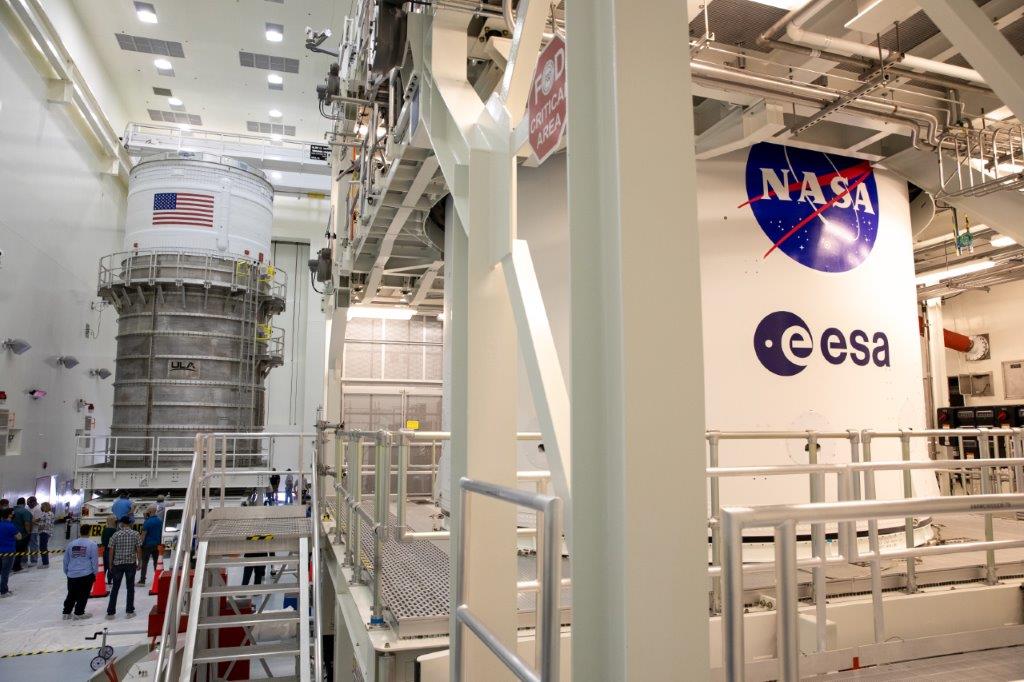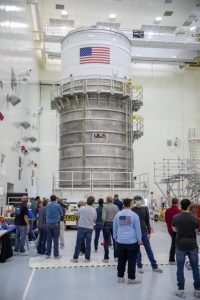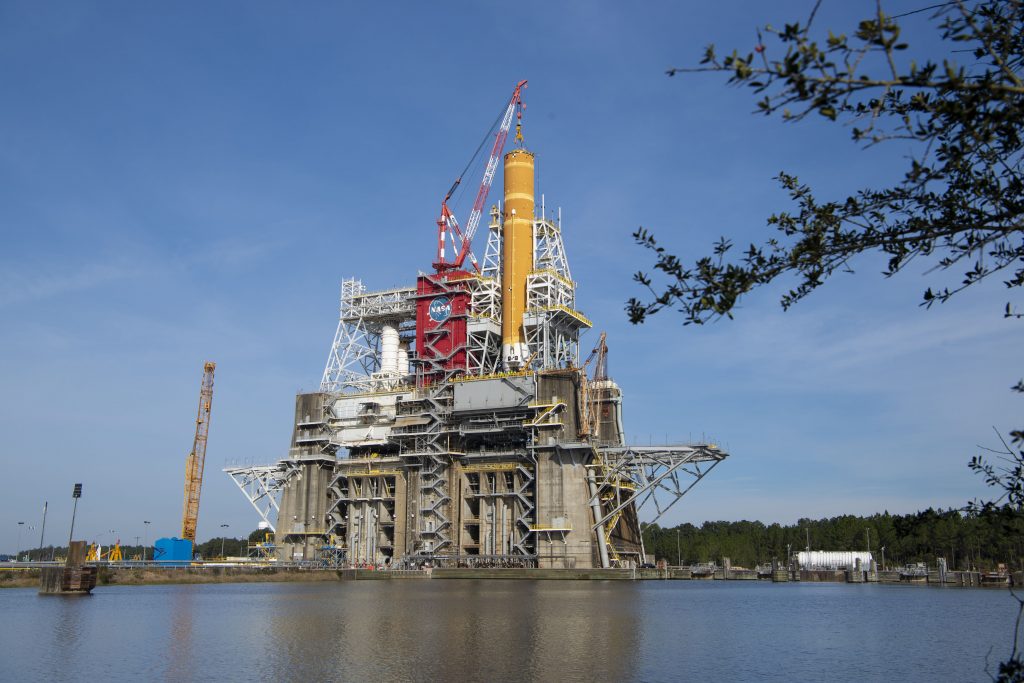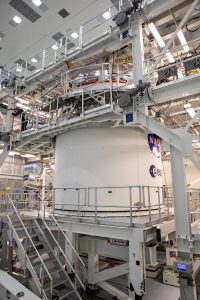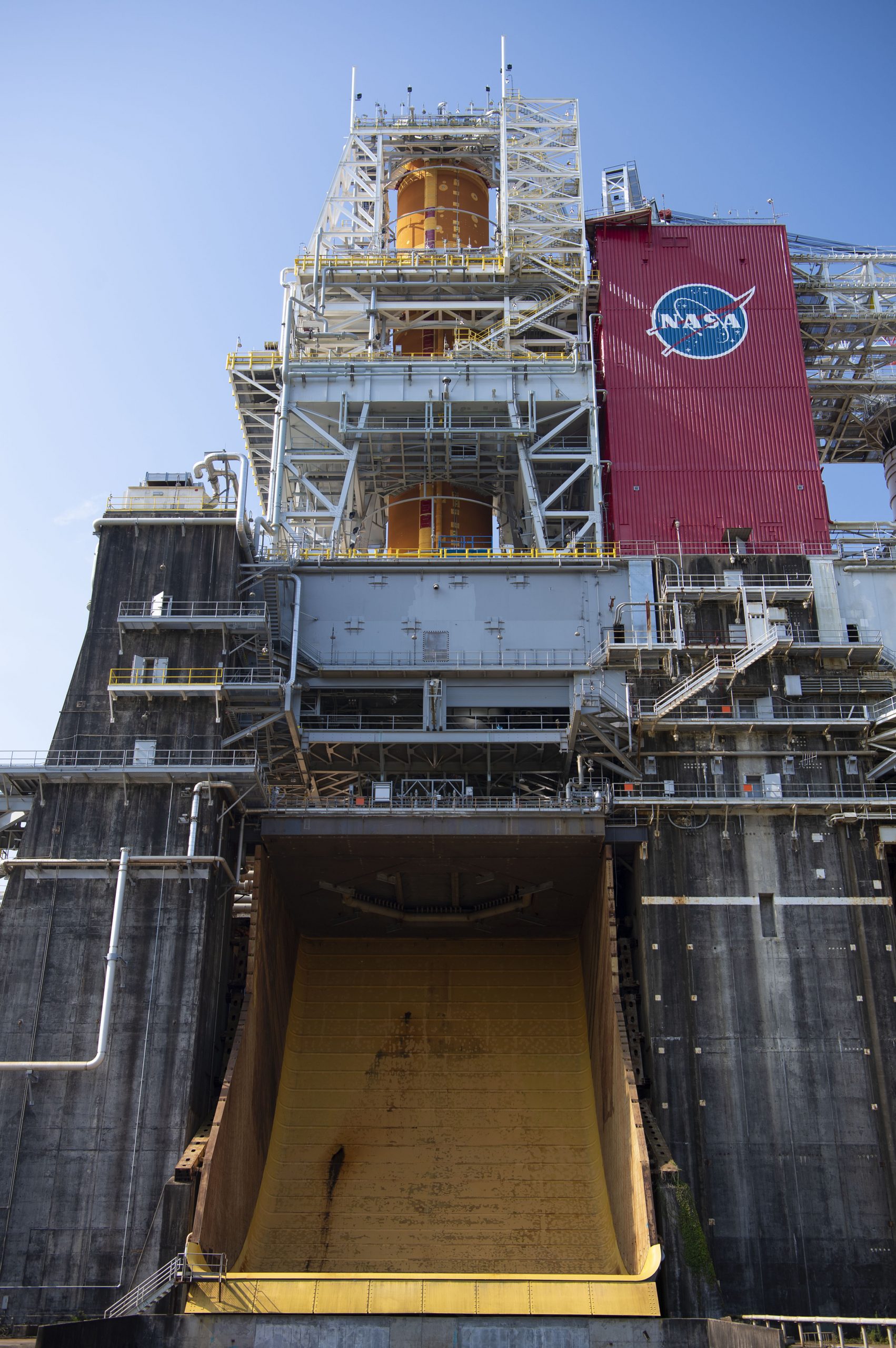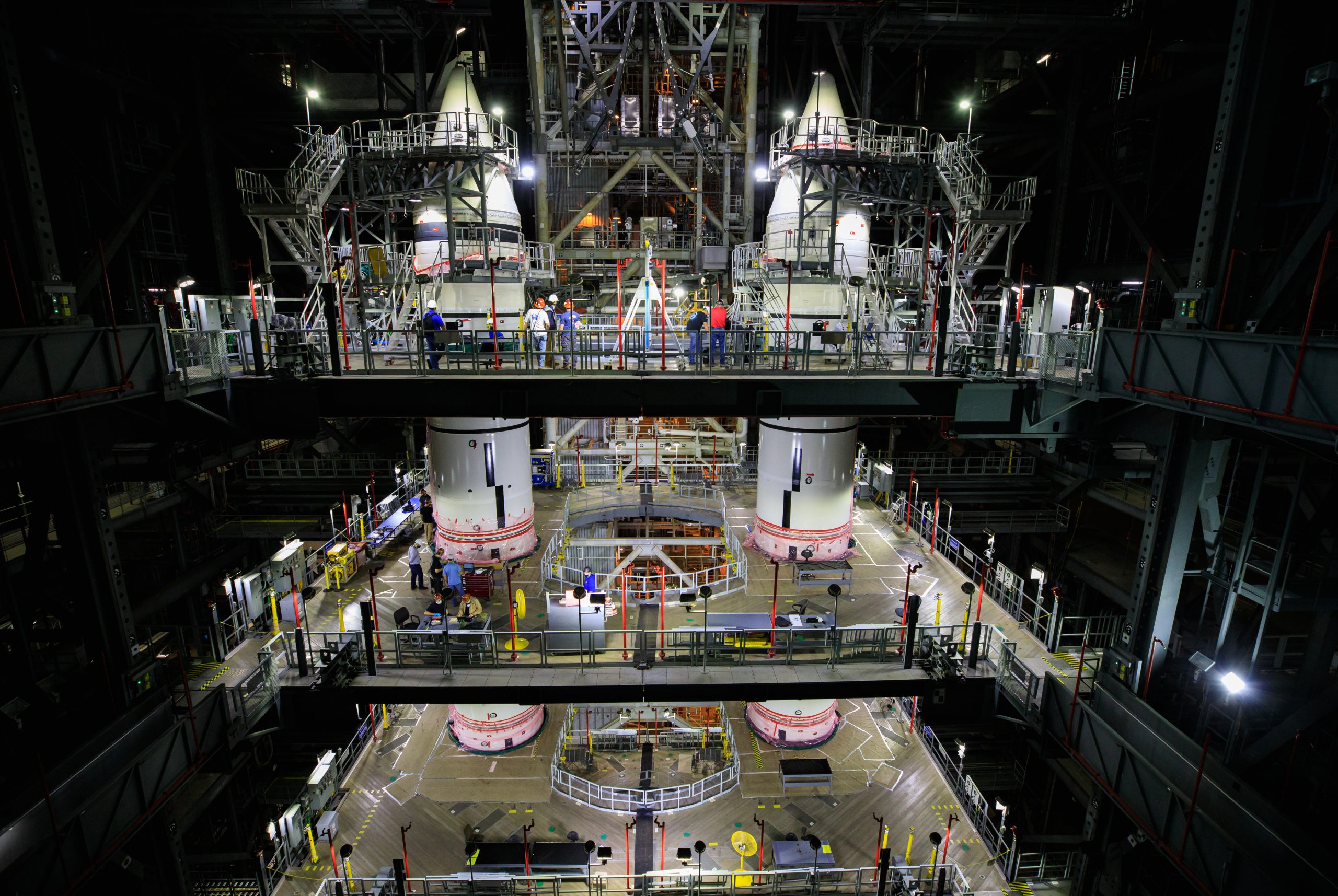
Leerlo en español aquí.
Stacking is complete for the twin Space Launch System (SLS) solid rocket boosters for NASA’s Artemis I mission. Over several weeks, workers used one of five massive cranes to place 10 booster segments and nose assemblies on the mobile launcher inside the Vehicle Assembly Building (VAB) at NASA’s Kennedy Space Center in Florida. Engineers with Exploration Ground Systems placed the first segment on Nov. 21, 2020, and continued the process until the final nose assembly was placed on March 2.
Prior to the arrival of the core stage, the team will finish installing electrical instrumentation and pyrotechnics, then test the systems on the boosters. When the SLS core stage arrives at Kennedy, technicians will transport it to the VAB and then stack it on the mobile launcher between the two boosters.
The SLS will be the most powerful rocket in the world, producing up to 8.8 million pounds of thrust during its Artemis I launch.
“Seeing the Space Launch System solid rocket boosters stacked completely on the Mobile Launcher for the first time makes me proud of the entire team especially the Exploration Ground Systems crew at Kennedy who are assembling them and also the teams at Marshall and Northrop Grumman who designed, tested and built them,” said Bruce Tiller, the SLS boosters manager at NASA’s Marshall Space Flight Center. “This team has created the tallest, most powerful boosters ever built for flight, boosters that will help launch the Artemis I mission to the Moon.”
Artemis I will be an uncrewed test of the Orion spacecraft and SLS rocket as an integrated system ahead of crewed flights to the Moon. Under the Artemis program, NASA aims to land the first woman and the next man on the Moon and establish sustainable lunar exploration.

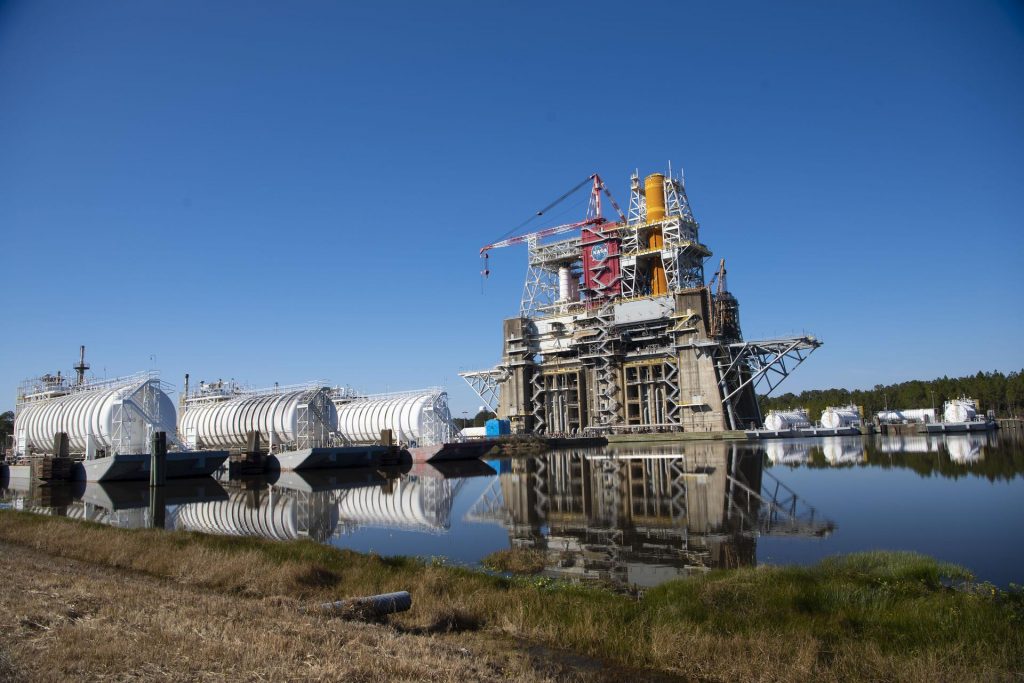 Last week during checkouts for the second hot fire test, data indicated the valve (a type of valve called a pre-valve) was not working properly. The valve is part of the core stage’s main propulsion system and is opened at the beginning of the test and closed if necessary to stop the flow of liquid oxygen from the core stage propellant tank to the respective RS-25 engine during the hot fire.
Last week during checkouts for the second hot fire test, data indicated the valve (a type of valve called a pre-valve) was not working properly. The valve is part of the core stage’s main propulsion system and is opened at the beginning of the test and closed if necessary to stop the flow of liquid oxygen from the core stage propellant tank to the respective RS-25 engine during the hot fire.
